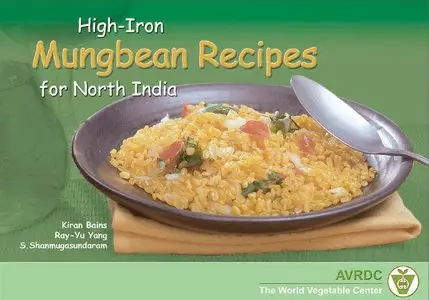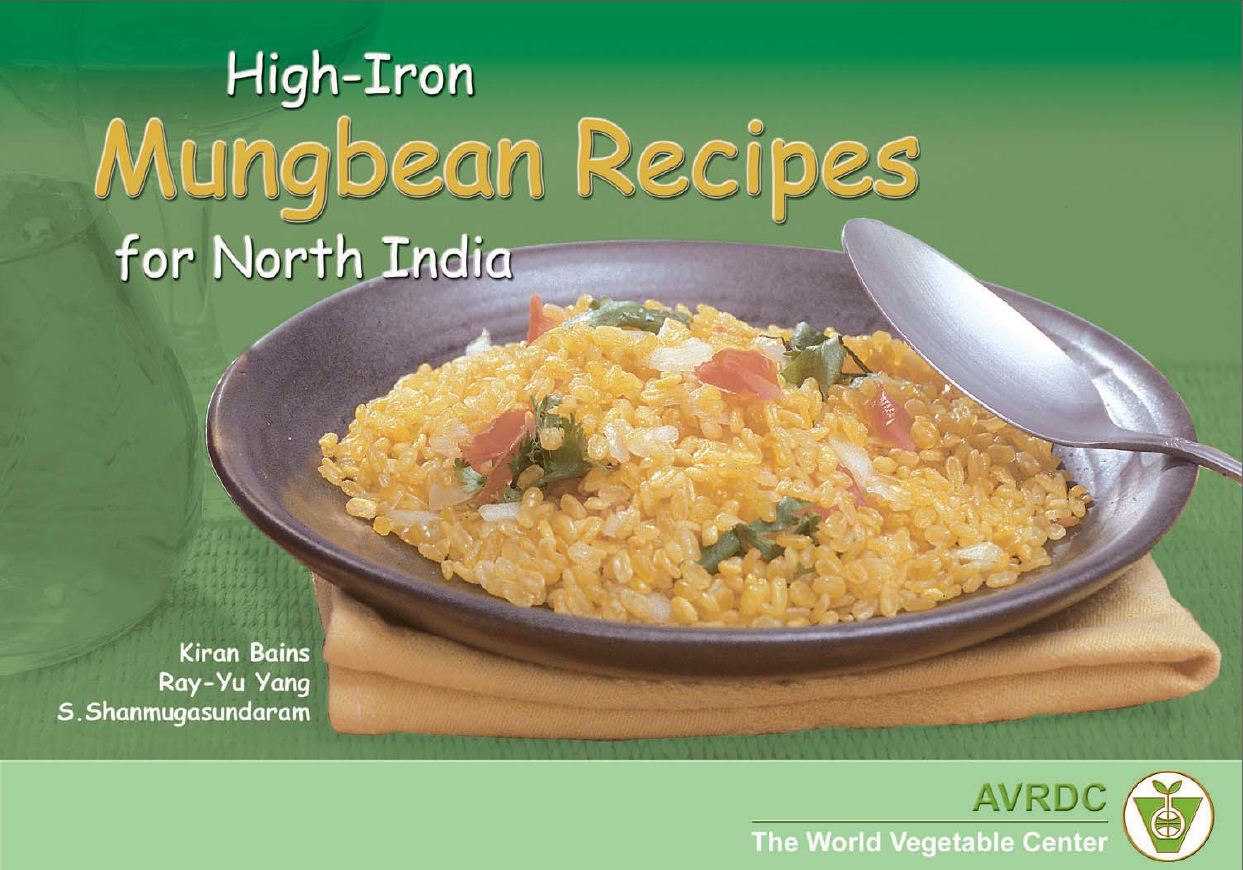High-Iron Mungbean Recipes For North India by Kiran Bains, Ray-yu Yang, and S. Shanmugasundaram Thomas Kalb (Editor) Chen Ming-Che (Photographer)
Publisher: AVRDC Publications 2004-01-20 | 39 Pages color HQ | ISBN: 929058131X | Subjects: Cookbook / Vegetarian / Vegan / Health / Nutrition | PDF | 10.2 MB
Publisher: AVRDC Publications 2004-01-20 | 39 Pages color HQ | ISBN: 929058131X | Subjects: Cookbook / Vegetarian / Vegan / Health / Nutrition | PDF | 10.2 MB
Mungbean is widely grown and consumed in India. The pulse is an excellent source of protein (20%) and a fair source of iron (4–7 mg per 100 g), but the presence of phytate and tannin in mungbean reduces its iron bioavailability significantly. This loss of nutritional value is critical since iron deficiency anemia is the major micronutrient deficiency problem in India, affecting more than 320 million people. Estimates are that 40–80% of pregnant women, 60–70% of children, and 50% of adolescent girls in India suffer from anemia.
Vijayalakshmi et al. (2003) have shown that a food-based approach using improved mungbean recipes is a sustainable way to reduce this nutritional disorder. The bioavailability of iron from mungbean may be enhanced through sprouting or by cooking it with vegetables such as tomato and cabbage. Vegetables exerting iron bioavailability-enhancing effects were further reported by Yang et al. (2002). Subramanian and Yang (1998) have prepared improved mungbean / vegetable recipes for South India. These recipes were developed with an emphasis on simple cooking methods, locally available and inexpensive ingredients, and consumer acceptability.
Although India has achieved self-sufficiency in cereal food grains during the past two decades, there has been a reduction in the production of pulses such as mungbeans. This reduction has resulted in a decline in pulse consumption especially among poor families. The rice-wheat cropping system in the Indo-Gangetic Plains of India is primarily responsible for the enhanced cereal production in India; however, this cropping system has resulted in a number of problems, including a degradation of soils and increased dependence on chemical fertilizers and pesticides. To overcome these problems, diversification of the system by introducing fast maturing mungbean varieties between two cereal crops or instead of the rice crop has been proposed. The Department for International Development-sponsored project, “Improving income and nutrition by incorporating mungbean in cereal fallows in Indo-Gangetic Plains of South Asia” successfully incorporated short duration mungbean varietes in the rice-wheat cropping system. Such crop diversification enables the farmers to improve their household income and at the same time ensure nutritional security and enrich their soils. The high-iron recipes developed in this book were prepared to suit the palate of North Indians.
The selected ingredients are inexpensive and easily accessible to rural families as well as the urban poor. The iron bioavailability of mungbean has been substantially improved to 7.2–11.3% through cooking practices such as soaking, pressure-cooking, fermenting, sprouting, and using ironand vitamin C-rich vegetables as ingredients. Iron content of each recipe was determined by the atomic absorption method. Iron bioavailability was measured with the in vitro digestion/dialysis method described by AVRDC. The other micronutrient values were referred from the Food Composition Table listed in Huang et al.. The sensory qualities such as flavor and appearance were given due importance in preparing the recipes. By popularizing these recipes among the target population, the iron status of millions of vulnerable families in India can be substantially improved.
Contents:
Cover
Title Page
Contents
Introduction
Terms
Dhuli Mung Dhal
Sabat Mung Dhal
Parantha
Mung Dhal Khichri
Mung Spinach Saag
Mung Amaranth Saag
Mungbean Sprout Salad
Sprouted Mungbean Pulao
Mung Sprout – Mint Raita
Dahi Bhalla
Mung Spinach Pakoda
Mung Namkeen
Poha
References





